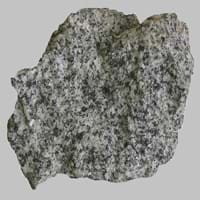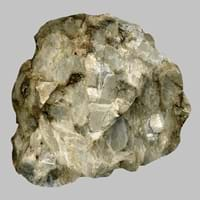Definition
Diorite is a grey to dark-grey intermediate intrusive igneous rock composed principally of plagioclase feldspar,biotite, hornblende, and pyroxene
Sovite is a coarse-grained variety of carbonatite which belongs to intrusive igneous rock
Discoverer
Unknown
Unknown
Etymology
From early 19th century coined in French, formed irregularly from Greek diorizein distinguish
Not Available
Class
Igneous Rocks
Igneous Rocks
Sub-Class
Durable Rock, Hard Rock
Durable Rock, Soft Rock
Other Categories
Coarse Grained Rock, Medium Grained Rock, Opaque Rock
Coarse Grained Rock, Fine Grained Rock, Medium Grained Rock, Opaque Rock
Texture
Phaneritic
Granular, Poikiloblastic
Color
Black, Brown, Light to Dark Grey, White
Black, Brown, Colourless, Green, Grey, Pink, White
Durability
Durable
Durable
Appearance
Shiny
Dull, Banded and Foilated
Interior Uses
Decorative Aggregates, Interior Decoration
Decorative Aggregates, Homes
Exterior Uses
As Building Stone, As Facing Stone, Garden Decoration
As Building Stone, Garden Decoration, Office Buildings
Other Architectural Uses
Curbing
Curbing
Construction Industry
As Dimension Stone, Cement Manufacture, Cobblestones, Construction Aggregate, for Road Aggregate
As a Flux in the Production of Steel and Pig Iron, As a Sintering Agent in Steel Industry to process Iron Ore, As Dimension Stone, Cement Manufacture, for Road Aggregate, Making natural cement, Manufacture of Magnesium and Dolomite Refractories, Unknown, Unknown
Medical Industry
Not Yet Used
Taken as a Supplement for Calcium or Magnesium
Antiquity Uses
Artifacts, Monuments, Sculpture, Small Figurines
Artifacts
Commercial Uses
Creating Artwork, Curling
An Oil and Gas Reservoir, As a Feed Additive for Livestock, Creating Artwork, Gemstone, Metallurgical Flux, Production of Lime, Soil Conditioner, Source of Magnesia (MgO)
Types
Not Available
Not Available
Features
Typically speckled black and white.
Available in lots of colors, Generally rough to touch, Is one of the oldest rock
Archaeological Significance
Monuments
Used
Not Yet Used
Famous Monuments
Data Not Available
Not Applicable
Sculpture
Used
Not Yet Used
Famous Sculptures
Data Not Available
Not Applicable
Pictographs
Not Used
Used
Petroglyphs
Not Used
Used
Figurines
Used
Not Yet Used
Formation
Diorite is a coarse-grained intrusive igneous rock which contains large interlocking and randomly oriented crystals and forms when molten lava does not reach the Earth’s surface and cools down in the Earth’s crust.
Sovites are formed due to low degrees of partial melting of rocks.
Mineral Content
Albite, Amphibole, Apatite, Biotite, Feldspar, Hornblade, Ilmenite, Magnetite, Muscovite or Illite, Olivine, Plagioclase, Pyroxene, Quartz, Sulfides, Titanite, Zircon
Ancylite, Apatite, Barite, Fluorite, Magnetite, Natrolite, Sodalite
Compound Content
Silicon Dioxide
CaO, Carbon Dioxide, Sodium Oxide
Types of Metamorphism
Cataclastic Metamorphism, Contact Metamorphism, Regional Metamorphism
Burial Metamorphism, Cataclastic Metamorphism, Contact Metamorphism, Hydrothermal Metamorphism, Impact Metamorphism, Regional Metamorphism
Types of Weathering
Biological Weathering, Chemical Weathering, Mechanical Weathering
Biological Weathering, Chemical Weathering, Mechanical Weathering
Types of Erosion
Chemical Erosion, Coastal Erosion, Water Erosion
Chemical Erosion, Coastal Erosion, Glacier Erosion, Sea Erosion, Water Erosion, Wind Erosion
Grain Size
Medium to Coarse Grained
Medium to Fine Coarse Grained
Fracture
Not Available
Conchoidal
Streak
Bluish Black
White
Porosity
Very Less Porous
Less Porous
Luster
Shiny
Subvitreous to Dull
Compressive Strength
Not Available
Cleavage
Not Available
Not Available
Specific Gravity
2.8-3
2.86-2.87
Transparency
Opaque
Opaque
Density
2.8-3 g/cm3
2.84-2.86 g/cm3
Resistance
Heat Resistant, Pressure Resistant, Wear Resistant
Heat Resistant, Pressure Resistant
Deposits in Eastern Continents
Asia
Not Yet Found
China, India, Kazakhstan, Mongolia, Russia, Uzbekistan
Africa
Egypt
Namibia, Nigeria, South Africa
Europe
Finland, Germany, Italy, Romania, Sweden, Turkey, United Kingdom
Austria, Denmark, Germany, Great Britain, Netherlands, Norway, Poland, Sweden, Switzerland, United Kingdom
Others
Not Yet Found
Greenland
Deposits in Western Continents
North America
USA
Canada, USA
South America
Argentina, Bolivia, Chile, Colombia, Ecuador, Peru
Brazil
Deposits in Oceania Continent
Australia
New Zealand, Western Australia
New South Wales, New Zealand
All about Diorite and Sovite Properties
Know all about Diorite and Sovite properties here. All properties of rocks are important as they define the type of rock and its application. Diorite and Sovite belong to Igneous Rocks.Texture of Diorite is Phaneritic whereas that of Sovite is Granular, Poikiloblastic. Diorite appears Shiny and Sovite appears Dull, Banded and Foilated. The luster of Diorite is shiny while that of Sovite is subvitreous to dull. Diorite is available in black, brown, light to dark grey, white colors whereas Sovite is available in black, brown, colourless, green, grey, pink, white colors. The commercial uses of Diorite are creating artwork, curling and that of Sovite are an oil and gas reservoir, as a feed additive for livestock, creating artwork, gemstone, metallurgical flux, production of lime, soil conditioner, source of magnesia (mgo).










